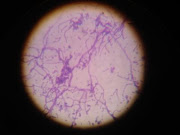Komal Raj Rijal1,6*, Megha Raj Banjara1,6, Binod Dhungel1, Samarpan Kafle1, Kedar Gautam1, Bindu Ghimire1, Prabina Ghimire2, Samriddh Dhungel2, Nabaraj Adhikari1, Upendra Thapa Shrestha1, Dev Ram Sunuwar3, Bipin Adhikari4,5 & Prakash Ghimire1*
1Central Department of
Microbiology, Tribhuvan University, Kirtipur, Kathmandu, Nepal. 2Nepal Medical College, Jorpati,
Kathmandu, Nepal.
3Department of Public
Health, Asian College for Advance Studies, Purbanchal University, Lalitpur,
Nepal.
4Mahidol‑Oxford Tropical Medicine
Research Unit, Faculty of Tropical Medicine, Mahidol University, Bangkok, Thailand.
5Centre for Tropical
Medicine and Global Health, Nuffield Department of Medicine, University of
Oxford, Oxford, UK.
6These authors contributed
equally: Komal Raj Rijal and Megha Raj Banjara.
*email: komal.rijal@cdmi.tu.edu.np;
prakash.ghimire@cdmi.tu.edu.np
Nepal
suffers from high burden of antimicrobial resistance (AMR) due to inappropriate
use of antibiotics. The main objective of this study was to explore knowledge,
attitude and practices of antibiotics uses among patients, healthcare workers,
laboratories, drug sellers and farmers in eight districts of Nepal. A
cross-sectional survey was conducted between April and July 2017. A total of
516 individuals participated in a face-to-face interview that included
clinicians, private drug dispensers, patients, laboratories, public health
centers/hospitals and, livestock and poultry farmers. Out of 516 respondents,
62.8% (324/516) were patients, 16.9% (87/516) were clinicians, 6.4% (33/516)
were private drug dispensers. A significant proportion of patients (42.9%;
139/324) thought that fever could be treated with antibiotics. Majority (79%;
256/324) of the patients purchased antibiotics over the counter. The knowledge
of antibiotics used among patients increased proportionately with the level of
education: literate only [AOR = 1.4 (95% Cl = 0.6–4.4)], versus secondary
education (8–10 grade) [AOR = 1.8 (95% Cl = 1.0–3.4)]. Adult patients were more
aware of antibiotic resistance. Use of antibiotics over the counter was found
high in this study. Knowledge, attitude and practice related to antibiotic
among respondents showed significant gaps and need an urgent effort to mitigate
such practice.
Citation:
Scientific Reports (2021);11:11554 DOI: https://doi.org/10.1038/s41598-021-90812-4
www.nature.com/scientificreports
Full-text: Download





























